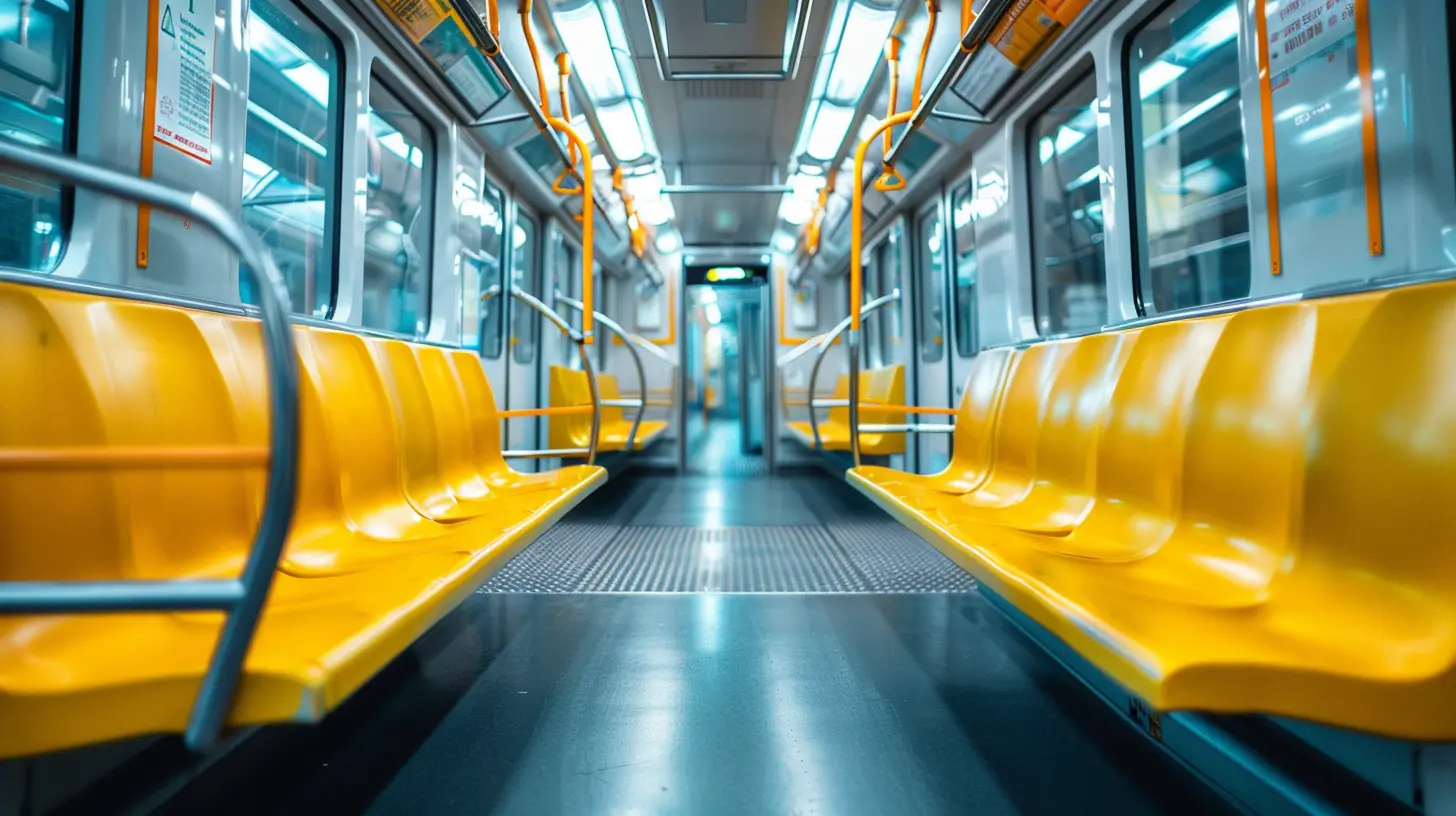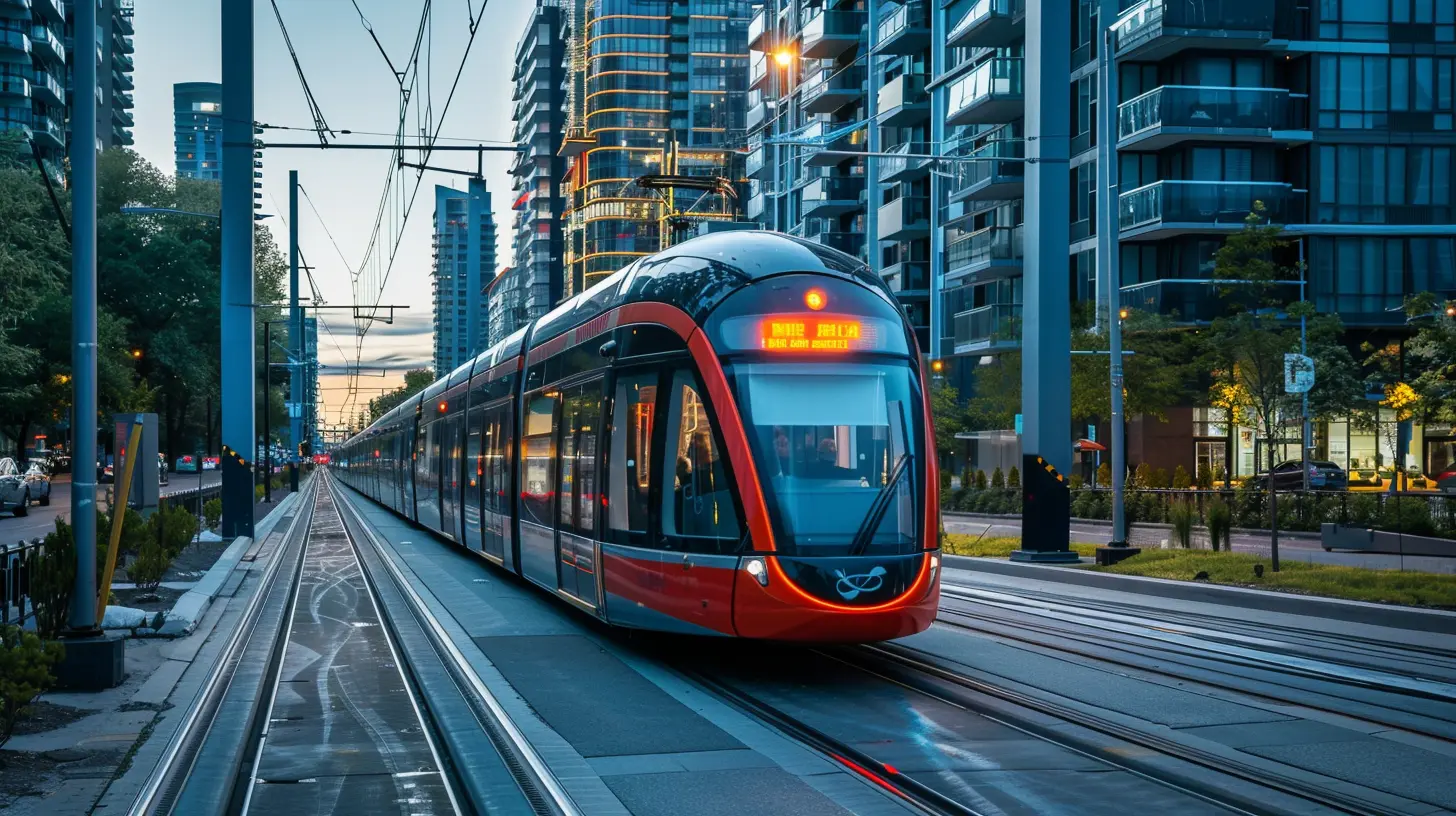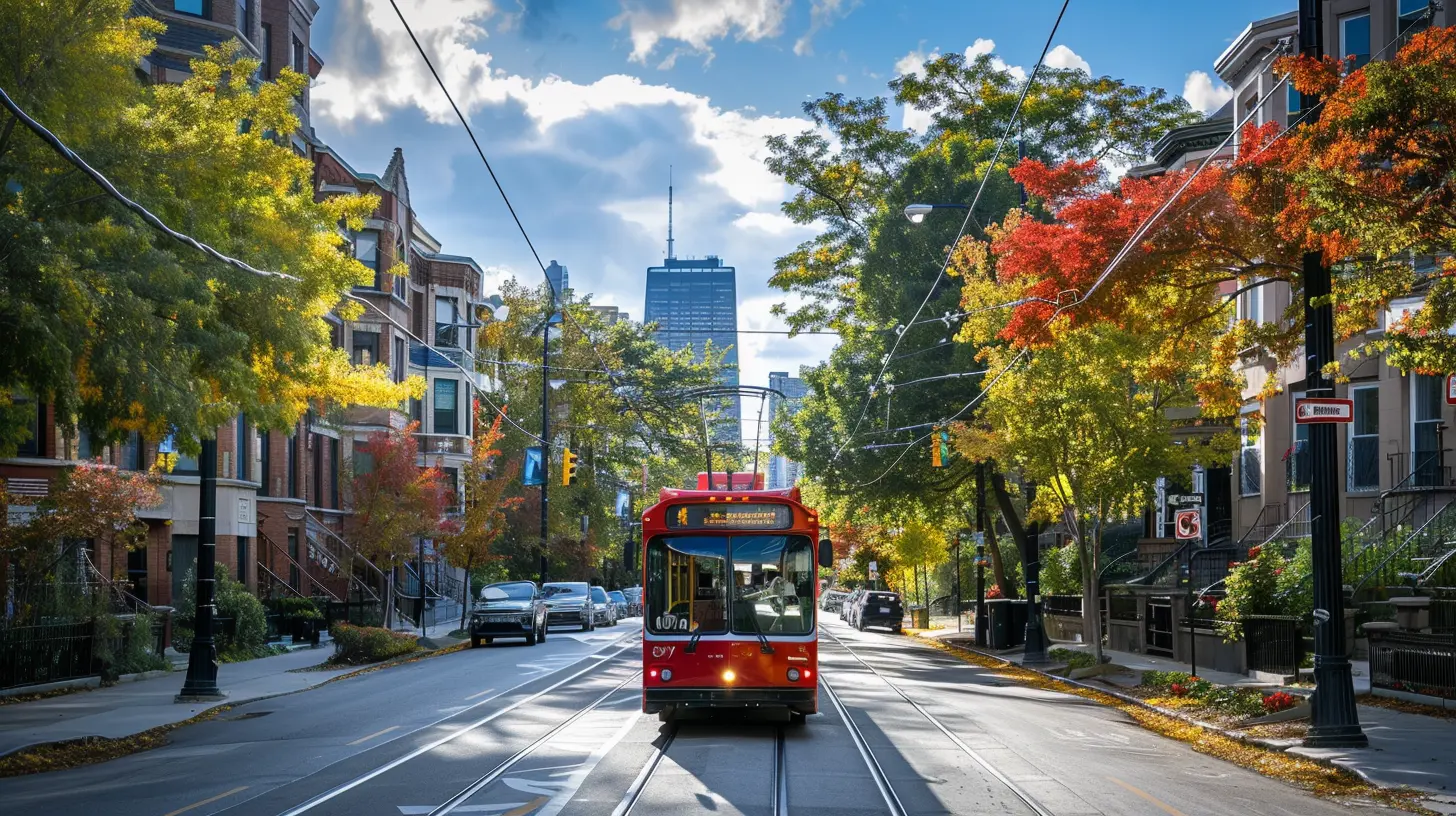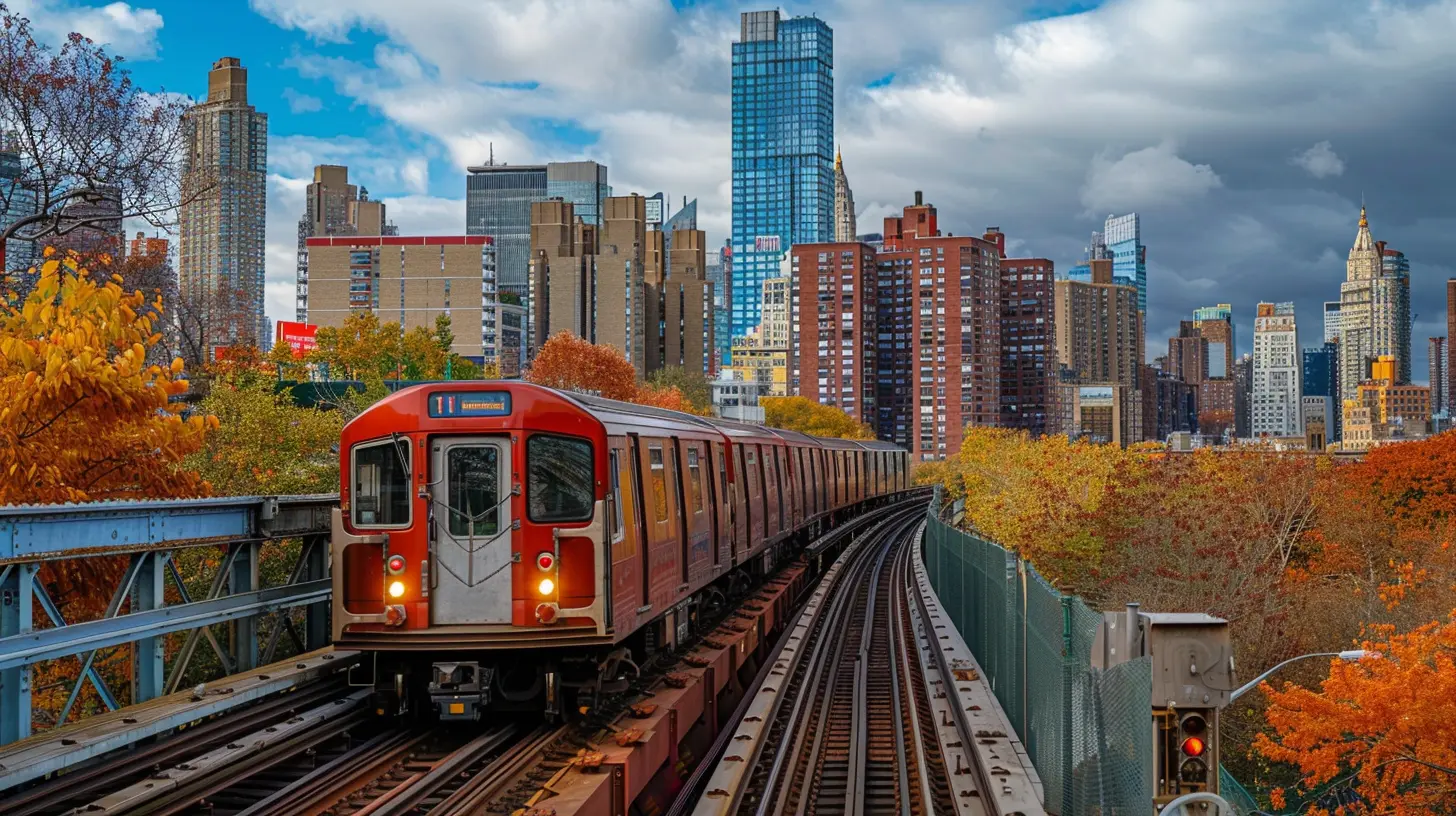The Benefits of Living Near Public Transportation When Renting
9 October 2025
When searching for the perfect rental, location is often a key factor. While things like square footage and modern amenities are important, one major consideration is often overlooked: proximity to public transportation.
Living near public transit can completely transform your daily routine, cutting down on commute times, saving you money, and even improving your overall lifestyle. But is it really worth prioritizing? Let’s dive into the real benefits of renting near public transportation.

1. Convenience & Time-Saving
Let’s be real—nobody loves long commutes. Whether you work in the city or just like to get around easily, having a bus stop or train station nearby can significantly cut down your daily travel time.Think about it: instead of sitting in endless traffic or searching for parking, you can hop on a bus, subway, or train and get straight to your destination. That’s extra time you could be using to sleep in, enjoy your morning coffee, or even squeeze in a quick workout.
For professionals, students, or anyone with a packed schedule, this can be a game-changer.

2. Cost Savings on Transportation
Car ownership is expensive. Between gas, insurance, maintenance, and parking fees, owning a vehicle can take a serious bite out of your budget.When you live near public transportation, you might not even need a car at all. Even if you do own one, you’ll likely use it less, leading to major savings over time.
A monthly transit pass can cost a fraction of what you’d spend on car expenses, freeing up more money for rent, dining out, or that vacation you’ve been dreaming about.

3. Healthier Lifestyle
Believe it or not, living near public transit can actually encourage a healthier lifestyle.- More Walking: Instead of driving everywhere, you might find yourself walking more to and from transit stops. Those extra steps add up!
- Less Stress: Traffic jams, road rage, and the endless search for parking can take a toll on your mental health. Public transit lets you sit back, relax, or even read a book while commuting.
- Reduced Pollution Exposure: Cars contribute to air pollution, and spending less time behind the wheel means you’re inhaling fewer pollutants daily.
A little extra movement and less stress? Sounds like a win-win!

4. Environmental Benefits
If you're someone who cares about sustainability, choosing to live near public transportation is one of the easiest ways to reduce your carbon footprint.Fewer cars on the road mean:
✅ Less air pollution
✅ Lower greenhouse gas emissions
✅ Reduced traffic congestion
By taking the train or bus instead of driving, you’re doing your part to make the world a greener place. Plus, many cities are moving toward electric-powered buses and trains, making public transportation even more eco-friendly.
5. Better Neighborhoods & Amenities
Properties near public transportation often come with better access to restaurants, shops, entertainment, and essential services. Think about it—businesses love opening up near transit hubs because they attract high foot traffic.This means you’re more likely to find grocery stores, cafes, gyms, and medical facilities within walking distance of your home. No need to drive across town just to grab a coffee or do your grocery shopping!
Additionally, neighborhoods with strong public transportation systems tend to have higher property values, which can lead to well-maintained streets, parks, and community spaces.
6. Increased Job Opportunities
One of the biggest perks of living near public transit? You can consider jobs in a much larger area.When you rely solely on a car, job-hunting is often limited by commuting distance, traffic patterns, and parking availability. But with easy access to buses or trains, you can comfortably take jobs in different parts of the city—sometimes even in a neighboring town.
Many employers value employees who can reliably get to work on time, and living near public transit gives you that advantage.
7. Safer & More Social Living
Believe it or not, living close to public transportation can actually make your neighborhood feel safer.- More Foot Traffic: Areas near transit hubs tend to be busier, making them less attractive to criminal activity.
- Better Lighting & Security: Many transit stations are well-lit with security cameras and patrols, adding to overall safety.
On the social side, public transport can connect you with your community in ways you never expected. Whether it’s chatting with a regular bus rider or discovering local events posted at your station, living near transit hubs helps create a sense of connection.
8. Flexibility in Lifestyle
One thing people often overlook? The flexibility that comes with easy access to public transportation.- Want to go out with friends but don’t want to drive? Public transit has you covered.
- Don’t feel like dealing with the hassle of parking downtown? Just take the train.
- Need to run errands but don’t own a car? Buses get you where you need to go.
This level of flexibility can drastically improve your quality of life, making it easier to get where you need to be without constantly relying on a car.
9. Increased Rental Demand & Resale Value
If you’re considering rental properties from an investment perspective, living near public transportation is a smart move.Apartments and homes near public transit often see higher demand, meaning landlords can charge premium rent prices. Tenants love the convenience, so these properties tend to stay occupied longer.
Additionally, if you plan to buy a home in the future, one located near reliable public transport will generally appreciate in value faster than one in a more remote area.
Is Living Near Public Transportation Right for You?
While there are clear advantages, living near public transit may not be for everyone. Here are a few things to consider:- Noise Levels: More people and more movement sometimes mean a little extra noise, especially if you're close to a busy station.
- Crowds: Public transit areas often attract crowds, which can be overwhelming for those who prefer quieter settings.
- Cost Differences: In some cities, rental prices can be higher for properties within walking distance of major transit hubs.
That said, if you value convenience, affordability, and a connected lifestyle, living near public transportation is undoubtedly worth considering when renting.
Final Thoughts
Choosing a rental near public transportation comes with a variety of perks—from saving time and money to improving your health and reducing your carbon footprint. It’s all about finding what works best for your lifestyle and priorities.So, when you’re apartment hunting, don’t just look at square footage and fancy kitchens—pay attention to the nearest bus or train stop. The right location could make all the difference.
all images in this post were generated using AI tools
Category:
Rental PropertiesAuthor:

Kingston Estes
Discussion
rate this article
1 comments
Aiden McMahan
Living near public transportation isn't just about convenience; it's a lifestyle upgrade. Enjoy reduced commute times, easier access to city amenities, and greater financial flexibility. Plus, who wouldn't want to skip the parking hassle? Smart renters know the value of location!
October 10, 2025 at 10:47 AM

Kingston Estes
Absolutely! Living near public transportation enhances convenience and lifestyle, offering time savings, easy access to amenities, and reduced costs—all while avoiding parking stress. Smart choice for renters!


